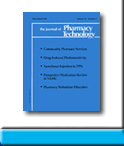 |
 |
FLUOROQUINOLONE
E-TESTING AGAINST PSEUDOMONAS AERUGINOSA AND STREPTOCOCCUS
PNEUMONIAE
Eric G Sahloff, Benjamin P Smith, and
Steven J Martin
To request full article click here.
OBJECTIVES AND DESIGN: The use of fluoroquinolones has increased against antibiotic-resistant pathogens such as Streptococcus pneumoniae and Pseudomonas aeruginosa. The E-test (AB Biodisk, Solna, Sweden) is now commonly used for susceptibility testing of fluoroquinolones against these organisms. The purpose of the present study was to evaluate the accuracy and correlation of minimum inhibitory concentrations (MICs) determined by E-testing with a National Committee for Clinical Laboratory Standards reference standard, agar-dilution MIC testing. E-test and agar dilution MICs were compared for ciprofloxacin, levofloxacin, gatifloxacin, and moxifloxacin against clinical isolates of S. pneumoniae (n = 53) and P. aeruginosa (n = 62).
MAIN OUTCOMES MEASURES: MICs were determined by use of agar dilution and E-test methods. Essential agreement was defined as MICs from both methods within + 1 log2 dilution. Categorical agreement compared MIC interpretations: susceptible, intermediate, or resistant. Categorical disagreement between methods was reported as very major, major, or minor errors.
RESULTS: E-tests produced lower MICs than the reference method for ciprofloxacin, gatifloxacin, and moxifloxacin versus P. aeruginosa. For S. pneumoniae, E-test MICs tended to be higher for all fluoroquinolones. The best correlation between testing methods was seen with levofloxacin. Essential agreement occurred more frequently with P. aeruginosa in the lower range of MICs and with S. pneumoniae in the higher range of MICs. Categorical agreement was greater than 90% for the 460 comparisons. Two very major errors (false-susceptible) occurred for gatifloxacin versus P. aeruginosa.
CONCLUSIONS: For the determination of fluoroquinolone susceptibility against S. pneumoniae and P. aeruginosa, E-testing is a simple tool for clinical use, and few very major or major errors in susceptibility interpretation occur for either organism. For determining fluoroquinolone MICs, E-testing may overestimate drug activity against P. aeruginosa and underestimate drug activity versus S. pneumoniae compared with the agar dilution method. These differences could affect appropriate antimicrobial selection, leading to suboptimal outcomes.
J Pharm Technol 2002;18:241-7.
To request full article click here.
|
|
|
||
|

